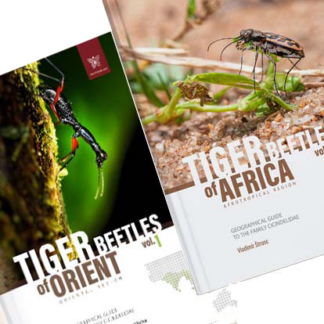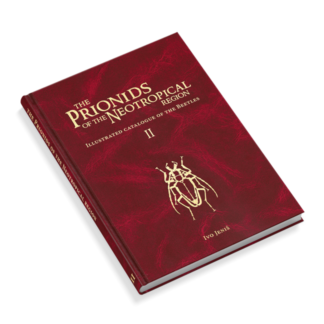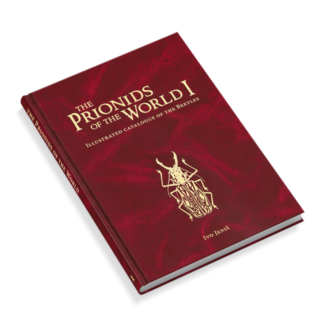Insect collection techniques represent a large and complex area of research that is constantly evolving. It is important to note that insects are one of the most diverse groups of animals on the planet, which greatly influences the methods used to collect them. As insects are a key component of ecosystems and can also impact human activities such as agriculture and forestry, it is important to collect and study them.
Book novelties:
Prioninae of the World I.
Cerambycidae of the Western Paleartic I.
Techniques for collecting insects
Book about Beetles
Buy now. List of family Coleoptera
You can find here: Carabidae, Buprestidae, Cerambycidae, Cicindelidae, Scarabaeidae, Lucanidae, Chrysomelidae, Curculionidae, Staphylinidae
Books about Beetles
Unique pictorial atlases for identifying Beetles:
(2020) Tiger Beetles of the World, Cicindelidae, Illustrated guide to the genera
(2023) Tiger Beetles of Africa, Cicindelidae, Geographical guide to the family Cicindelidae
(2024) Tiger Beetles of Orient, Cicindelidae, Geographical guide to the family Cicindelidae
(2022) Ground Beetles of Africa, Afrotropical Region
(2022) Jewel Beetles of the World, Buprestidae, Illustrated guide to the Superfamily Buprestoidea
(2008) The Prionids of the World, Prioninae, Illustrated catalogue of the Beetles
(2010) The Prionids of the Neotropical region, Prioninae, Illustrated catalogue of the Beetles
Try New modern shop – insect-books.store
Techniques for collecting insects
One of the main techniques for collecting insects is the use of traps. There are a number of different types of traps that can be adapted to the specific insect species or environment in which it is found. Some of these trap types include the Malaise trap (ideal for flying insects), the Barber trap (used for beetles and other running species) and the Winkler extractor (suitable for soil-dwelling insects).
Another method of collecting insects is by hand. This technique involves searching for and collecting individual specimens directly in the field. Hand collection can be carried out using a variety of tools such as tweezers, brushes or nets. This method is often suitable for studying smaller insect populations or for collecting specimens from a particular environment.
When studying insects that live on plants, a technique called ‘wading’ can be used. Browsing involves examining plants and their surroundings to find and identify insects. This method is particularly useful in the study of phytophagous insects, i.e. species that feed on plants.
Techniques for collecting insects
In some cases, attractants may also be used to attract certain insects. Attractants can be chemical (pheromones) or visual (e.g. imitation flowers). Attractants allow the collection of specific insect species without the need for traps or manual collection.
We have mentioned just a few of the many insect collection techniques used in professional research. It is important to emphasize that each technique has its advantages and disadvantages that must be taken into account when choosing them. The choice of the appropriate method depends on a number of factors such as the insect species, the environment or the purpose of collection. Techniques for collecting insects
Ultimately, the key to successful insect collection is careful preparation and knowledge of the different methods and techniques. This is the only way to ensure efficient and gentle collection of samples that will subsequently provide valuable information for further research on the ecology, biology or ethology of insects. Boouks about Beetles





